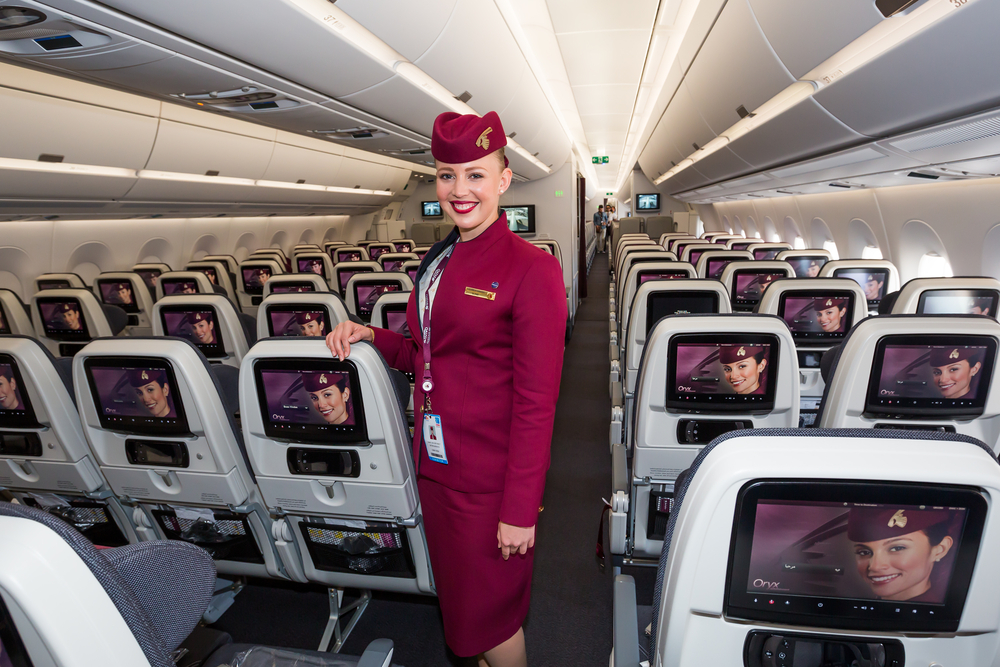Share This Article
ArrayBy Sahar Adatia and Jimmy Singh.
Over the past several years, the incidence of unruly airline passengers – those whose demeanour or behaviour fail to comply with cabin crew directions – has increased considerably.
According to the International Air Transport Association, between 2007 and 2016, there were over 58,000 incidents of unruly passengers reported on aircraft in-flight. These cases included violence against crew and other passengers, harassment and failure to follow safety instructions.
Unruly passengers present a serious threat to the safety or security of the aircraft as well as to those on board. This is largely because their boisterous behaviour, other than threatening safety, also pressurises and disrupts both passengers and crew, in turn causing delays and diversions.
Needless to say, for anyone on board a flight, having to tolerate the nuisance of, say, a drunk flyer hurling abuse or creating a ruckus over the 12-hour journey can be an ordeal difficult to forget.
This week, an alarming case of unruly airline behaviour that took place in April 2017 made its way back into headlines as the man behind the violent outburst faced court over the incident.
Patrick Walters, 48, is currently on trial in the District Court of Western Australia, accused of allegedly unlawfully assaulting an experienced member of aircraft crew, Karen Dwyer, as she assisted passengers to board an afternoon Qantas flight from Port Hedland International Airport to Brisbane on April 18 last year. The incident unfolded as preparations for take-off were underway.
How the Alleged Scuffle Between Mr Walter and Ms Dwyer Unfolded
At the District Court on Tuesday, the court heard that Mr Walters initially came to the attention of the cabin staff after he was missing from his allocated seat in the exit row.
He eventually emerged from the bathroom, upon which he was asked for his identification. It was then discovered that the man had in fact allegedly exchanged boarding passes with another passenger.
The owner of the boarding pass was revealed to be a colleague of Mr Walters, who turned up late for the flight, allegedly seemingly intoxicated and acting in an argumentative manner with the Qantas air crew. As such, the man was stopped when he tried to board.
According to evidence given by Ms Dwyer, her manager told the man he was too drunk to fly, at which point he began to swear and become aggressive.
Seeing this unfold, Mr Walters allegedly got up and advanced towards the front of the plane to lend his colleague assistance.
According to Ms Dwyer, who has been a flight attendant for 24 years, she could smell alcohol on Mr Walters. He was also slurring his speech and unsteady on his feet.
It is reported that Ms Dwyer then requested Mr Walters to take his seat, however he allegedly refused, and while she attempted to concurrently deal with the friend of his who arrived late, Mr Walters started videoing her on his phone as the two continued to feud.
When Ms Dwyer noticed Mr Walters was recording the interaction, she repeatedly told him that she did not want to be filmed and to stop. The reason behind this was because she was wearing a government-issued security clearance guard, which should not be made public by being put on social media, and so emphasised to stop recording two to three time.
However, it is alleged that Mr Walters snubbed the requests, which led the flight attendant to reach for his phone in an attempt to switch off the video, and upon doing so, the drunken man charged at the woman before tackling her in a “body slam” manoeuvre.
“He slammed his body against mine,” Ms Dwyer said.
Speaking of the strength with which Mr Walters attacked her, she described that his “body force” resulted in her hitting her head, hip and shoulder against a bench.
Ms Dwyer was left shaking, pale and visibly in shock following the physical altercation.
She claimed she was not able to work for three weeks after the dispute due to pain in her neck and shoulder.
“Pushing” and “A Scuffle”: Court Hears from Witnesses
According to passenger Stephen Ainscough who witnessed the scene, Mr Walters was doing as he pleased.
“He was not listening,” Mr Ainscough said.
“There was pushing, a scuffle over the phone and they went backwards into the galley.”
The witness also said that the stocky man was forcing her backwards.
While Mr Ainscough could not see what happened after this, it is reported that he could hear distressed screaming. Moreover, following the drunk men being taken off the plane, he noted that Ms Dwyer was discernibly unsettled.
“She was, like, shaking, white – she was in shock,” the witness said.
The court also heard from Ms Dwyer’s colleague, Laura Norton, who testified that the man’s “full body weight” was “on top of her”.
Ms Norton said “stop it” several times seeing Ms Dwyer become very agitated with filming, however this was to no avail and eventually a passenger in the business class section along with the manager intervened.
Both women testified that Mr Walters was drunk, with Ms Norton adding that he dropped a set of headphones when he boarded the plane, almost tipping over upon attempting to pick them up.
The Defence: Mr Walters “Not Interfering with Safe Conduct of the Flight”
In defending Mr Walters, lawyer Stephen Stewart asserted that Ms Dwyer had no authority to take or touch his client’s phone in any way.
He also underscored that there was no law on recording on an aircraft.
“What he’s doing is not interfering with the safe conduct of the flight,” Mr Stewart said.
However, Ms Dwyer upheld that passengers needed to comply with the directions of cabin crew under the airline’s “conditions of carriage”.
“He failed to comply with cabin crew,” she said.
She also added that the confrontation caused a delay of more than three hours.
The trial continues.
The Problem of Unruly Airline Passengers
According to the Australian Institute of Criminology, while specific strategies have been implemented by Australian airlines, the Australian Federal Police and government bodies to minimise the occurrence of unruly passenger behaviour, the incidents continue to occur, with ramifications for the safety and security of the crew, passengers and aircraft.
The increase in incidents and in particular, of bad behaviour, has been blamed on a range of factors, including the cheaper availability of flights and higher rates of alcohol consumption by passengers. The cramped conditions of economy seating have also been suggested as a factor leading to offensive behaviour.
Meanwhile, the severity of this misconduct has been noted to vary, ranging from cases of onboard smoking, failure to comply with instructions, failure to fasten seatbelts, intoxication, and disorderly conduct.
One of the most significant consequences of on-flight unruly behaviour is the recovery of flight diversion costs.
Specifically, the Australian Institute of Criminology advises that diverting an aircraft in order to offload a disruptive passenger not only presents safety and security risks, but also incurs substantial costs for the airline.
These costs may include fuel loss, airport-related costs and payments to other passengers for the inconvenience caused or as compensation for related costs such as additional meals, accommodation or alternative flights.
The Law on Assaulting an Aircraft Crew
A person who is guilty of assaulting a crew on board of an aircraft will face a penalty of up to 10-years imprisonment under section 20A of the Crime (Aviation) Act 1991 (NSW).
A person accused of this offence can only be guilty if the prosecution can prove each of the following elements beyond reasonable doubt:
- The accused person intentionally assaults, threatens with violence or intimidates another person; and
- The other person (alleged victim) is a member of the crew of the aircraft; and
- The accused person does this whilst on board of an aircraft; and
- The aircraft is a ‘Division 3 aircraft’
A ‘member of the crew of the aircraft’ includes a person who has duties or functions on board of the aircraft.
‘Threaten’ under this Act includes any statement or conduct indicating, or from which it could reasonably be inferred that it’s his/her intention to do that act.
A ‘division 3 aircraft’ is defined in section 3 of the Act and includes, a defence aircraft, foreign aircraft in Australia or outside Australia ‘while engaged in a flight that started in Australia or that was, when the flight started, intended to end in Australia’. It also includes an Australian aircraft that’s mainly used for purposes of a prescribed flight, flight between a part of Australia and a place outside Australia, or a flight wholly outside Australia.
Generally, an ‘assault’ is conduct of a person who intentionally or recklessly causes another person to apprehend immediate and unlawful violence. The word ‘reckless’ here means where the accused person was aware of a substantial risk as to causing the other person an apprehension of immediate and unlawful violence, but unjustifiably took that risk anyway.
‘Assault’ doesn’t require there to always be physical contact, but it can also include the ‘infliction of unlawful force on another’ person. This is also known as a ‘battery’.
It should be noted also that if the assault committed impacts that crew member’s ability to perform their duties on board, then the maximum penalty rises up to 20-years imprisonment under section 21 of the Act.
Book a Lawyer Online
Make a booking to arrange a free consult today.
Call For Free Consultation
Call Now to Speak To a Criminal Defence Lawyer
Over 40 Years Combined Experience
Proven SuccessAustralia-Wide
Experienced LawyerGuarantee
 (02) 8606 2218
(02) 8606 2218
 (02) 8606 2218
(02) 8606 2218














